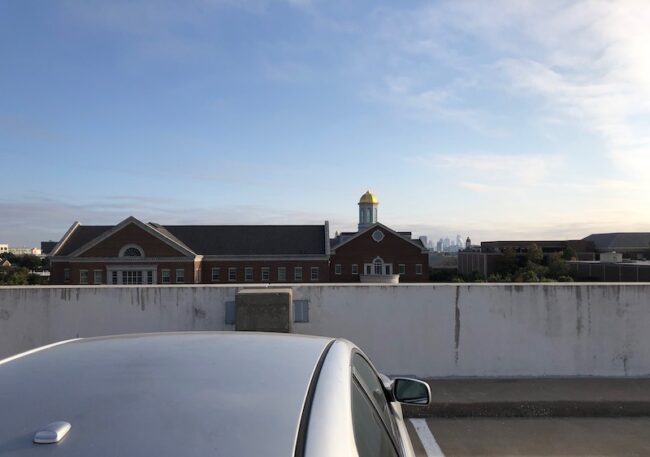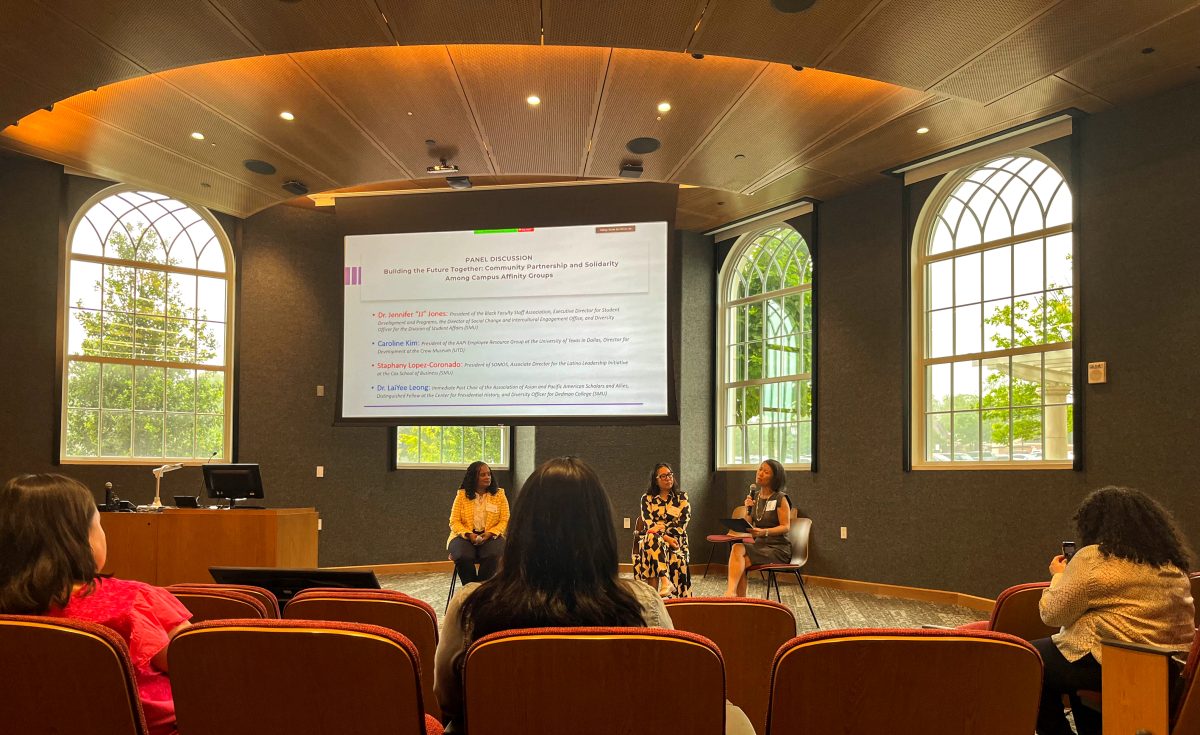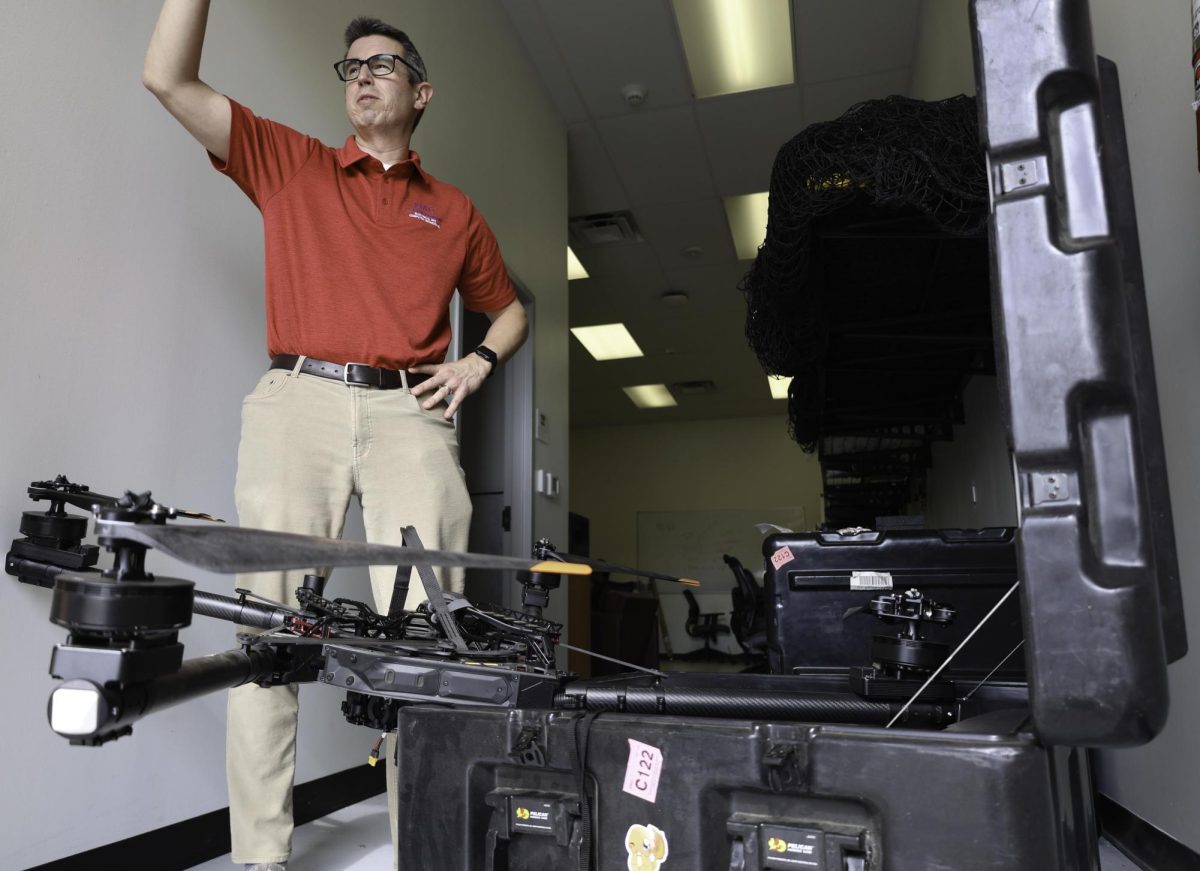It was a hot August day as Celestina Rogers stared out at White Rock Lake in Dallas. The cool blue water glimmered off her van, which had just traveled over 1,400 miles. After hours of road-tripping from San Diego to Dallas, she was finally back at SMU to start her junior year. Rogers was looking forward to studying political science, journalism, and human rights.
That day at the lake, Rogers’ friend Cole Bresnehen joined her. As Rogers and Bresnehen cleaned the inside of her van, they caught up after a summer apart due to the coronavirus pandemic. On their way back to campus, they passed a police officer overlooking the lake. Immediately, Rogers and Bresnehen realized they forgot to close the back door to her van. In front of the officer, Bresnehen scuttled to shut the door.
“If we were trying for it to not be an event or a spectacle, it was one anyways,” Bresnehen said.
What might not seem like a big deal to most people meant a lot more to Rogers. She did not just expose an empty back seat in her van. For her, it was home.
According to research from the Hope Center at Temple University, 14% of four-year college students faced homelessness before the pandemic.
When the economy receded, students were not exempt from the fallout. By April, 20.5 million Americans lost their jobs. As students left campus, they lost both their local and federal work-study jobs.
Elsie Johnson, director of student support at SMU, added the Caring Community Connections Program, which supports students with a wide variety of issues, began tracking economic hardships this semester. So far, 21% of all requests are related to economic needs. Even though she believes the university will see more requests for financial help due to the pandemic, Johnson said student homelessness is not new.
“I feel like people don’t think that there are students who have financial issues at SMU, and in some ways, [COVID-19] has sort of leveled that playing field,” Johnson said. “It existed before, though.”
For some students in tight financial situations, homelessness outweighs the cost of taking out more loans.
Rogers had scholarships to cover her fall classes and meal plan, not room and board, though. While she had a job assisting a graduate with research, Rogers decided paying for an apartment was not worth it, mainly because she was uncertain about how long SMU would offer flex classes. Rogers did not want to get stuck with a lease if the university transitioned completely online.
“It [paying for an apartment] was going to be something that was going to impact my financial situation, probably the rest of my life, if I chose to do that,” Rogers said.
Instead, Rogers laid out bedding in the back of her van and lined the walls with her belongings. Just before school started, she made the long trip across the country to Texas.
When Chanel Stinson, Rogers’ friend from SMU, found out, she posed opposition.
“I thought it was a bad idea,” Stinson said. “I lowkey tried to kind of talk her out of it, but, of course, I’m going to support her with whatever she’s going to do.”
When Stinson realized Rogers had her mind set, she flew out to California to help her make the haul.
“If she was really gonna stick with it, I told her I would help her bring it to Texas,” Stinson said.
Even though Stinson did not love the idea, she said it aligned with Rogers’ outgoing character.
“Everything is a story with Cel,” Stinson said. “She wanted to live in her van for Christ’s sake.”
But, Rogers was not worried. She had a roof, showers in Dedman Center for Lifetime Sports, and air conditioning 24/7 at Fondren Library.
“The fact that SMU has the resources it does for students, that was the only thing that made me comfortable even attempting it in the first place,” Rogers said.
When Rogers arrived, she discovered COVID-19 changed those reassurances. Dedman Center disabled their showers, and Fondren Library shortened their hours.
Suddenly, these changes further complicated Rogers’ plan to live in her van.
“It was a really nice little home, but the heat killed me, absolutely killed me,” Rogers said. “I had to get a towel soaking wet at night and sleep with that as a blanket with a fan to keep myself cool with the windows cracked. Without the ability to wake up and freakin’ shower in the morning, I was like hell no.”
But, there were a few perks, such as watching the glowing colors of a sunrise beam over campus from the top of a parking garage.
Bresnehen said he did not know how to help Rogers as the stuffy nights in her van lengthened.
“It felt like she was on her own,” Bresnehen said. “I could help her as much as I could, but she couldn’t stay.”
Soon, the hot August heat took its toll on Rogers. Within a week and a half, she decided to stop living in her car. Thanks to fully virtual classes, Rogers drove to El Paso to stay with her uncle and younger brother.
“Without online classes, who knows, I might have dropped out of school,” Rogers said. “I’m not sure where I would be.”
Rogers’ family in El Paso was not working or attending school. So, she found it challenging to focus.
“When you’re not in an environment of learning and education, you don’t have those resources to just walk up to all the time,” Rogers said. “You have to seek them out, and it can be a struggle not to be around that and try to motivate yourself.”
Once again, Rogers loaded up her van and drove back to San Diego to stay with her cousins and another uncle. This time, her family was studying in school or working as a teacher.
Johnson said she saw remote learning help students this semester in similar situations as Rogers.
“You sort of remove [shelter] as a struggle, so that you can focus on what you’re learning,” Johnson said.
Moving in with a family, who is also in school, has been a game-changer for Rogers.
“I think it’s important to have that [educational] system in place,” Rogers said. “I’m lucky enough to have a family that’s got a lot of people in similar situations as me.”
Now, as Rogers looks out at the sparkling cobalt coast, life is much better. No longer is she worried about where her next shower will be or if her peers will realize she is on Zoom in her van.
But, Rogers said, she is one of the lucky ones because she had the option to leave.
For students facing economic hardships, they can receive help through the university’s Caring Community Connections Program and receive food from The Shop. Caring Community Connections works with each student to meet any needs he or she may have, including homelessness. Friends, faculty, and staff can also submit concerns on behalf of a student.















